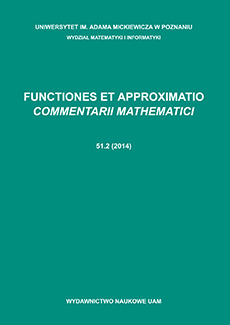Abstract
Let $A$ be a finite subset of an abelian group $G$. For every element $b_i$ of the sumset $2A = \{b_0, b_1, ...,b_{|2A|-1}\}$ we denote by $D_i = \{a-a': a, a'\in A; a + a' = b_i\}$ and $r_i = |\{(a,a'): a + a' = b_i; a, a' \in A \}|$. After an eventual reordering of $2A$, we may assume that $r_0 \geq r_1 \geq ... \geq r_{|2A|-1}.$ For every $1 \le s \le |2A|$ we define $R_s(A)=|D_0 \cup D_1 \cup ... \cup D_{s-1}|$ and $R_s(k) = \max \{R_s(A): A \subseteq G, |A| = k\}.$ Bourgain and Katz and Tao obtained an estimate of $R_s(k)$ assuming $s$ being of order $k$. In this note we find the {\it exact value } of $R_s(k)$ in cases $s = 1$, $s = 2$ and $s = 3$. The case $s = 3$ appeared to be not simple. The structure of {\it extremal sets} led us to sets isomorphic to planar sets having a rather unexpected form of a perfect hexagon. The proof suggests the way of dealing with the general case $s \ge 4$.
Citation
Gregory A. Freiman. Yonutz V. Stanchescu. "On a Kakeya-type problem." Funct. Approx. Comment. Math. 37 (1) 131 - 148, January 2007. https://doi.org/10.7169/facm/1229618746
Information





